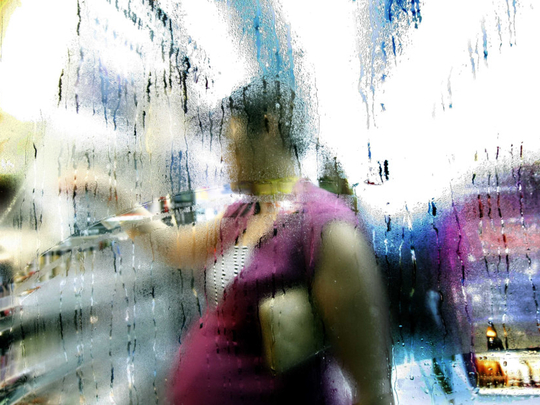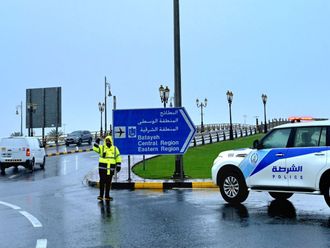
Abu Dhabi: Nights in the UAE may become less comfortable in years to come as the difference between maximum daytime high temperatures and minimum night-time low temperatures shrinks, according to new research.
Weather model data compiled by Masdar University of Science and Technology looks at the impact of climate change on weather patterns in the UAE.
The finding is important given that cooler evenings in desert conditions allow the human body to recover from the daily drubbing of the sun.
Dr Taha B.M.J. Ouarda, Professor of Water and Environmental Engineering and head of the Centre for Water and Environment at Masdar Institute, said data was gathered in the UAE, abroad and from satellite tracking. The models look at trends as far as 2045.
“We are looking at extreme temperature events and changes in the diurnal temperature range (DTR), which is the difference between the maximum and the minimum temperatures recorded every day. We observed that, in a large number of stations in the Gulf region, DTR has a negative trend, meaning the difference between the maximum [day] and the minimum [night] temperatures is decreasing,” he said.
Dr Ouarda said that in a sense “the UAE is not becoming hotter, but it is becoming less cold”.
Daily minimum
Explaining the findings, he said that in the last 70 years, annual mean temperatures in the UAE have increased an average of 0.5 degrees Celsius. However, it is the daily minimum temperature that increased by 0.84 degrees Celsius in this period while the daily maximum stayed more or less stable.
Hence, a decrease in DTR by 0.16 degrees Celsius is resulting in warmer nights.
Masdar data also suggests that humidity levels will increase in the UAE in the long term making life less comfortable for those of us who tend to experience health issues in hot and sticky weather.
In the weather simulations conducted by the Masdar team, the highest temperatures were observed towards the end of the simulation period (around 2045).
The weather models also look at indices that combine both temperature and humidity.
Humidex index
The humidex index is a combination index of ambient temperature and relative humidity.
The humidex is important to look at since human comfort is affected by the combination of both humidity and temperature.
The models predict an increase in humidex values in the region. Given warmer nights, “this can have some health effects, since the body can usually deal with high temperatures if it has the chance to rest during the night due to lower temperatures”, Dr Ouarda said.
Masdar’s models use a large amount of information, including Met Office data. The basic resources are ground observations at meteorological stations in the region and satellite and radar data. “For the UAE, this data is supplied by the National Centre for Meteorology and Seismology,” Dr Ouarda said.
Climate data will help UAE optimise resources
Understanding future weather patterns will help the UAE optimise resources, conserve flora and fauna and handle the effects of climate change better.
Dr Taha B.M.J. Ouarda, of the Masdar Institute, said: “The results can be used to optimise the use of water resources, plan agricultural activities [resistant crops, design infrastructure able to withstand high winds and temperatures, plan fisheries’ activities and build long-term estimates of the impact of heat spells, floods, droughts, extreme dust storms on public health and develop long-term public health plans].”
Dr Behjat Al Yousuf, Interim Provost, Masdar Institute. had earlier pointed out that “the UAE’s socio-economic development is linked to its weather, underpinning the need for improved weather and climate prediction”.
Masdar Institute is developing hydro-climate models to ensure proper water resource management, agricultural development, renewable energy deployment, and public health and safety, he added.










